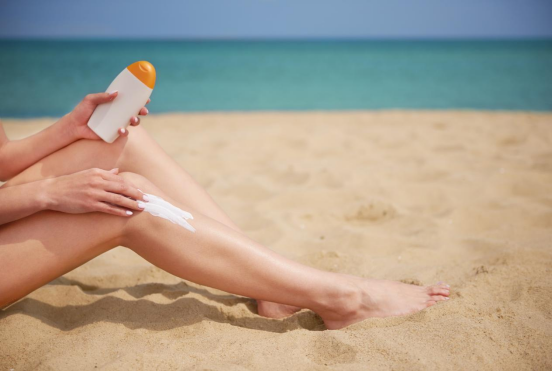
As consumers become increasingly savvy regarding skin care, the argument between chemical and physical sun blocks remains to be a warm topic. While both deal vital security against the sunlight's unsafe ultraviolet (UV) rays, physical sun blocks are usually lauded for their gentle yet efficient formula, making them a preferred selection for those with sensitive or responsive skin. The key to their success depends on their energetic components, which develop a physical barrier on the skin to block out UV radiation. This write-up will delve into the world of physical sun blocks, focusing on their key active ingredients: zinc oxide and titanium dioxide.
Unlike their chemical counterparts, which take in UV radiation and transform it into heat, physical sun blocks function by sitting on top of the skin to develop a shield that disperses and scatters both UVA and UVB rays. This mechanism is why they are frequently referred to as "sunscreens." The key advantage of this approach is its immediate effectiveness upon application and the reduced probability of causing skin irritability, as the components are not absorbed into the skin.
One of the most popular component in the physical sunscreen household is Zinc Oxide. This giant mineral is special in its ability to give broad-spectrum security, suggesting it successfully protects the skin against the complete range of UVA and UVB rays. UVA rays are in charge of early aging, including creases and great lines, while UVB rays are the key cause of sunburn. By using thorough security against both, zinc oxide plays an essential function in protecting against sun damage and reducing the danger of skin cancer.
Furthermore, zinc oxide is renowned for its soothing properties. It has been used for centuries to deal with small skin irritabilities, rashes, and burns, a testament to its mild nature. This makes sun blocks developed with zinc oxide an excellent choice for people with sensitive skin, acne-prone skin, or conditions like rosacea and eczema. Its non-comedogenic properties additionally mean it is much less likely to block pores, a typical issue for those with oily or mix skin.
The other key player in the physical sunscreen classification is Titanium Dioxide. This naturally occurring mineral is another outstanding component for producing a physical obstacle against UV rays. It is extremely reliable at showing and spreading UVB radiation, supplying robust defense versus sunburn. While it uses great protection across the UVB spectrum, it is generally considered less reliable against long-wave UVA rays contrasted to zinc oxide.
Consequently, titanium dioxide is commonly made use of combined with zinc oxide in sunscreen formulations. This mix produces a synergistic result, boosting the general broad-spectrum security of the item. By leveraging the toughness of both components, formulators can produce a sun block that uses detailed and trustworthy defense against the sunlight's destructive rays. Like zinc oxide, titanium dioxide is also mild on the skin and is a suitable alternative for those with sensitive or quickly aggravated skin.
In recent times, innovations in formulation technology have actually addressed among the first drawbacks of physical sunscreens: the thick, white actors they would commonly leave on the skin. Modern solutions now utilize pulverized or nano-sized particles of zinc oxide and titanium dioxide, which enables an extra cosmetically elegant application without jeopardizing their safety capabilities. This implies you physical sunscreen ingredients can enjoy the mild, effective defense of a physical sunscreen without the tell-tale white residue.
To conclude, physical sun blocks provide a reliable and gentle means to secure your skin from the sunlight. Their celebrity active ingredients, zinc oxide and titanium dioxide, work in consistency to develop a physical shield that deflects damaging UVA and UVB rays. With their exceptional security profile and suitability for all skin kinds, particularly sensitive skin, physical sunscreens are a formidable force in the fight versus sunlight damages. The next time you are Browse the sun block aisle, take into consideration the powerful, safety, and skin-loving benefits of a physical formulation.